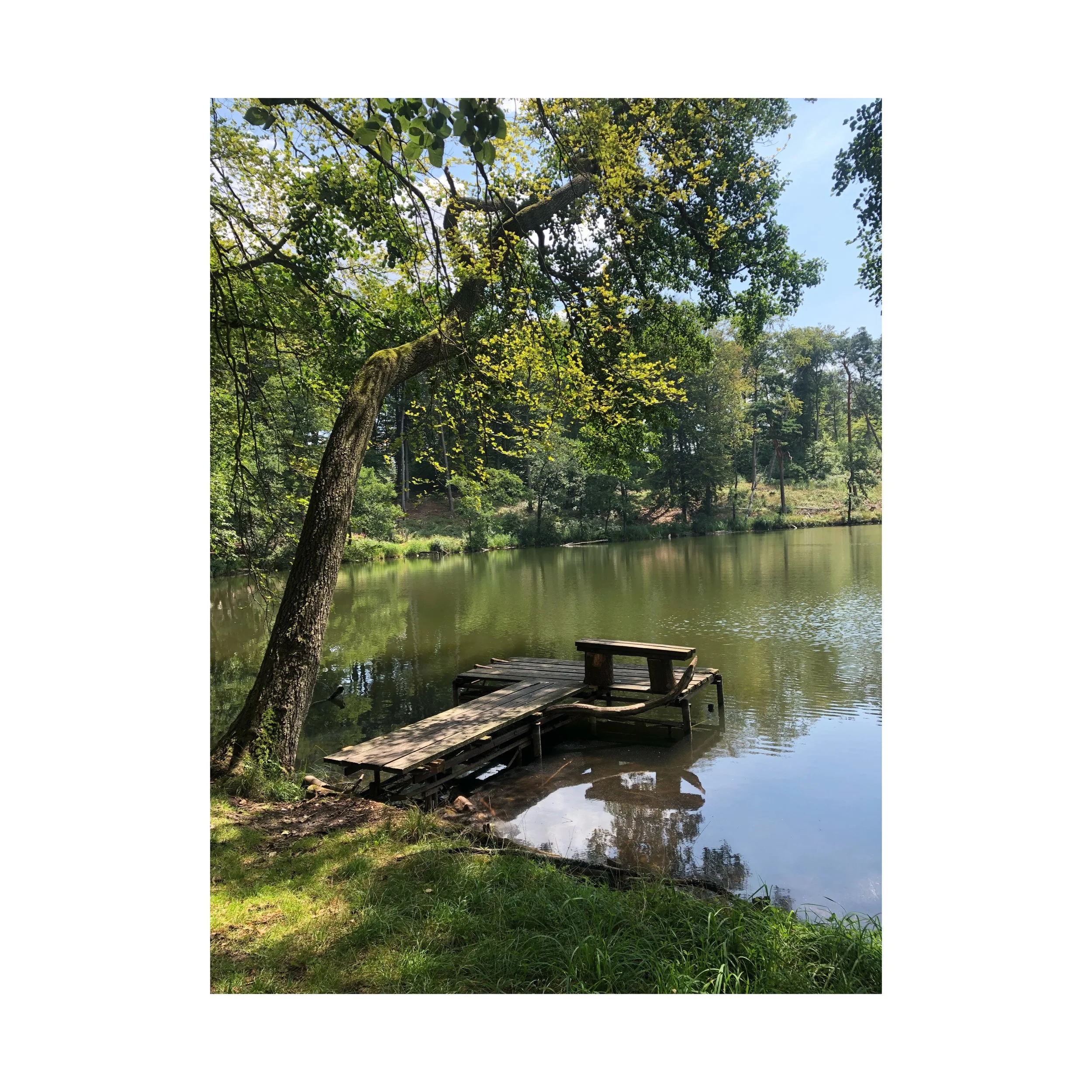Beginner's Backpack Buying Guide, or BBBG!
Been on enough walks to be seriously sick of achey shoulders and a sweaty back from hiking with your work bag, and you JUST need better access to snacks on route?! I’ve been there boo. And I’ve got some great news for you: you’ve just graduated to hiker level 2: the Technical Backpack Connoisseur!
What’s great about technical bags is that they distribute the weight on your pack across your shoulders, back and hips, and don’t wriggle or (god forbid) chafe as you walk. They’ve also got a ton of handy features from easily accessible pockets to rain covers and water bladder compatibility, so you get loads of functionality out of these bad boys you wouldn’t from a day-to-day bag. And most excitingly, there are LOTS to choose from, so you can rest assured that the PERFECT bag is ready and waiting out there for you! Sweet colours, rain proof, different sizes, hip belt pockets or no, it’s all out there. But… where do you even start when looking for the right hiking backpack for you?
I’ve put together a handy guide of key features a hiking backpack needs to have, which sizes are useful for what type of activity, and what to look out for when you’r trying packs on IRL. Try before you buy is definitely the name of the game here so that you can make sure the bag fits your like a glove.
1. Features of a hiking pack
The basic features a technical hiking pack absolutely needs to include for me are:
A single main storage compartment. While I do advocate a small zip compartment for keys and the likes, nothing drives me more crazy that rummaging through different parts my bag to find something, and having separate compartments does just that. Keep it simple, go single. (Note: for longer trips and bigger bags you can use stuff sacks or packing cubes which makes organisation infitely easier, and waterproof.)
Side pockets. Honestly it’s so lovely to be able to get to your water bottle without having to take your pack off. Not all bags (or shoulders) will make it easy to reach your bottle to take in and out yourself, but once you find one that works for you, you’ll love it forever.
A hip belt. Now. I’m aware some ultralighters consider a hipbelt extra weight which could be saved. But unless you’re a true hardcore, trust me, using a pack with hip belts will not only change how you actually wear your pack (more on this later) but totally free your shoulders from the weight of your pack. Plus I kinda like how they feel? You may too.
From there, here are a few extras I look for in a bag that aren’t strictly necessary but super nice:
An adjustable torso length. Unless the bag fits you perfectly it can be super helpful to be able to lower or heighten the shoulder girdle.
A sternum strap. This goes across your chest when you’ve got the pack on, and just adds that little extra weight distritbution. Definitely nice.
Load lifter straps. Especially when it comes to bigger bags, having small straps to shift the weight back and forwards make a huge difference when you’re walking for hours. They’re the little straps on the top of the shoulder straps, close to your ears.
Lid or small internal/front pocket. You don’t need a pen holder in a hiking bag but it is nice to have one smaller section for your keys, train ticket and other real-world stuff. You don’t need that flying out when you’re digging out your rain trousers because you’re in the midst of a terrific rain shower.
Hip belt pockets. This is where the lip balm lives! You can also store your phone, snacks and tissues here of your clothes don’t have pockets. Dead handy.
Integrated rain cover. Nice not to have to buy extra.
Looking V CUTE!! Super important! Your hiking bag is going to be your best bud on all of your favourite days, you’ll get rained on together, sweat through it (mmmh), and it will always have snacks and warm dry things to keep you safe and happy outdoors. Trust me, you will love this thing to pieces, so choose the one that makes you feel all warm and fuzzy from the get-go.
Now you’re ready to start looking at some bags. I’d recommend going online to get a feel for the sheer variety that’s available and the extras and price ranges available. IMO your best bet is to go on a local outdoor shop’s website to start off: Cotswolds and Ellis Brigham (UK), Camp4 and Sack und Pack (Germany) and REI (USA) are some of my favourites for selection and expertise.
2. Litres, or how much shit do you really need though
Once you start looking online, you’ll quickly notice bags tend to be categorised by litres, or capacity. So, which is right for you?
10-15 litres
I’d consider this a running or trailrunning backpack, made to carry the bare minimum: water and snackbars, possibly a teeny tiny extra layer. In essence, for me, these bags are too small for a hiking trip when you’re spending longer hours outside than on a run and need to be prepared for more weather change.
15-25 liters
This is the day pack sweet spot for me. My everyday hiking backpack is an 18L Osprey Talon, and it’s the perfect size for 3-season hiking (spring, summer, autumn). However in winter it’s a bit tricky to get my fleece, lunch, rain coat and scarf in there if it does warm up during a day hike. A lot of bags are around 22L, which would be a perfect all-rounder.
25-35 litres
Now it’s getting exciting! I use a 28L Lowe Alpine AirZone bag for multi day trips when I’m NOT camping. Bags this size are slowly getting into the “backpacking” territory where they’re large enough to carry food for a day or two and maaaybe a bivvy bag when you roll it up? To be confirmed. For a day hike however you’ll have more space in here than you need for one person. If you’re schlepping bae’s fleece and sandwiches for 5 this could be a good option, but otherwise it’s probably a big too big (which may lead to dreaded OVERPACKING).
35-45 litres
For me personally this is a bit of a between-zone. Mega ultralighters go multi-month trail hiking with 40L packs with a tent and all, but unless your camping gear is pretty petite you might struggle to get everything in here. And for me I don’t really need this big of a bag for a multi-day alpine-style hut-to-hut hike (where you need a sleeping bag liner but no tent) either. However, I DO actually have a 45 litre pack which was perfect for (drumroll) travelling! I took a 45L Deuter backpack for a two-week trip around India and it just right: big enough for everything I needed and small enough to carry comfortably. I’m sure I’ll use this pack for more two person camping weekends this year too: if you’re sharing a tent and cooking system and don’t have too much else to carry this will be perfect. This backpack stuff ain’t easy is it!!
45-65 litres
You, my friend, are DEFINITELY BACKPACKING! Check you out! Bags in this range are spacious enough to carry a tent, sleeping bag, food for a couple of days, cooking gear, and a change of clothes. I.e. what you need for a proper multi-day hiking and camping trip OR extended backpacking travel trip.
65-80 litres
You really don’t need this much shit.
3. Taking it IRL: trying packs on
Okay! You’ve done your research, singled out what you’re looking for, and have an idea of what size you’re after. Now it’s time to step out into the real work and TRY SOME BAGS ON!
In an outdoor shop you’ll have a ton of bags to try, and some really nice staff to help you decide what’s right for you, how to fit the bag properly. But let’s give you a head start with a few tips.
When you’re trying on the bag, put a little weight in it. There will be sand bags in the shop for this purpose. For a day bag go with ca 3-5 kg to put in the bag.
My favourite tip for trying bags is to start fitting the bag by putting the hip belt on first. Place the hip belts exactly on top of your hip bones and pull tight. Then tighten the shoulder straps, and finally close the sternum strap. This way you’ll see how the bag naturally fits you, AND this is the best way to distribute weight across your shoulders, back and hips. Voila!
Either ask a sales person for a hand or bring a friend with you to check that the bag is a really good fit on your shoulders. You want it to sit comfortably and cover your whole back. The shoulder straps should sit lightly on top of your shoulders when you’ve closed the hip belt, and should NOT be hovering in the air.
Once you start trying on a couple bags (we’re talking 5 to 10 to give you an idea) you’ll start to see different fits in each brand, what kind of shoulder straps you like, whether you want a back suspension system (where the pack is held away from you back so you don’t sweat as much) and what kind of features are doing it for you. Take your time and feel free to try out a few different shops too as you might find different brands sold by different chains. And most of all: ENJOY!
If you liked this post and learned some ace new intel then sign up to my newsletter to find out first which bags I’ve currently got the hots for! Thank you a dn happy hiking <3












